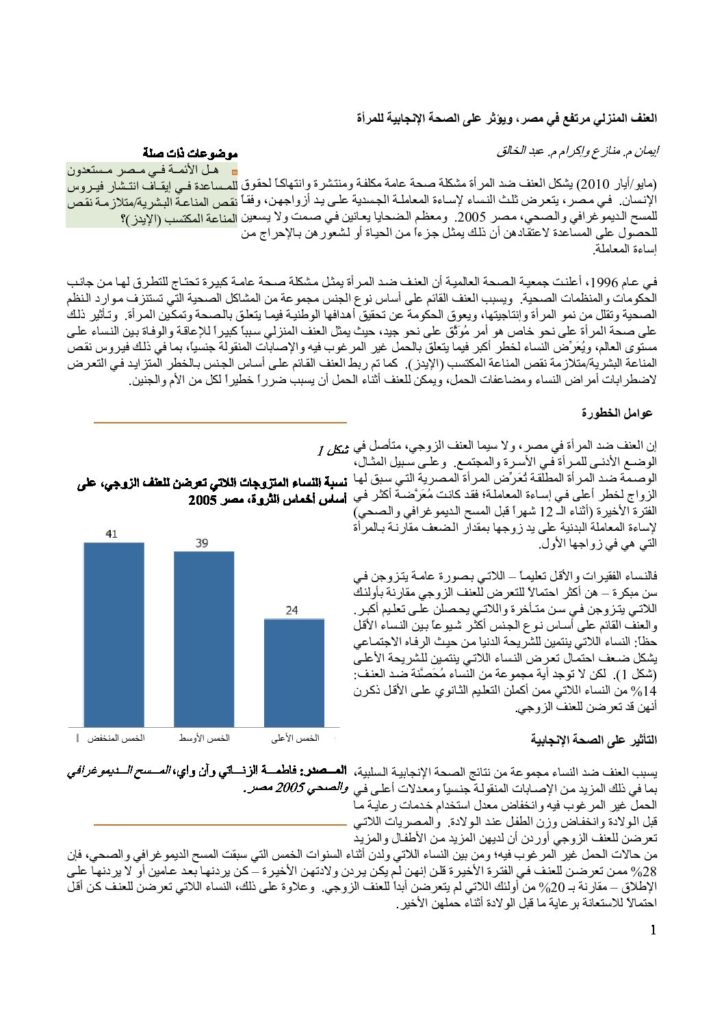Public Policy, Financial Decisions, and the Health of Older Adults
(2009) The financial decisions facing older adults as they reach retirement age are increasingly more difficult.
(2009) The financial decisions facing older adults as they reach retirement age are increasingly more difficult.

Policy changes could reduce the disproportionate burden of care work on American women, researchers said.

(2010) Violence against women is a costly and pervasive public health problem and a violation of human rights. In Egypt, a third of women are physically abused by their husbands, according to the 2005 Egypt Demographic and Health Survey (DHS).
(2011) For more than 20 years, since the first data collection in Sudan in 1989, the Demographic and Health Survey (DHS) team at Macro International has been tracking the prevalence of female genital cutting (FGC), also known as female genital mutilation and female circumcision.
(2014) Ukraine, a former republic of the Soviet Union, has undergone a series of dramatic demographic changes since its independence in 1991. Most significant, its birth rate declined sharply following independence, mirroring similar developments in other former Soviet republics.

Drones might seem to be a natural solution to maintaining a more even contraceptive supply in hard-to-reach areas, but family planning supplies aren’t yet the ideal cargo.
(2002) Deaths from heart disease have fallen dramatically over the past 50 years in the United States, from over 589 age-adjusted deaths per 100,000 people in 1950 to less than half that number in 2000 (258 per 100,000).
(2009) Religious diversity has been a defining characteristic of India's population for centuries. The country has no official state religion, but religion plays a central role in Indian daily life through its temple ceremonies, festivals, pilgrimages, family religious traditions, and the like. While Hinduism has been the dominant religion for several thousand years, Buddhism, Christianity, Islam, Jainism, and Sikhism have also flourished.